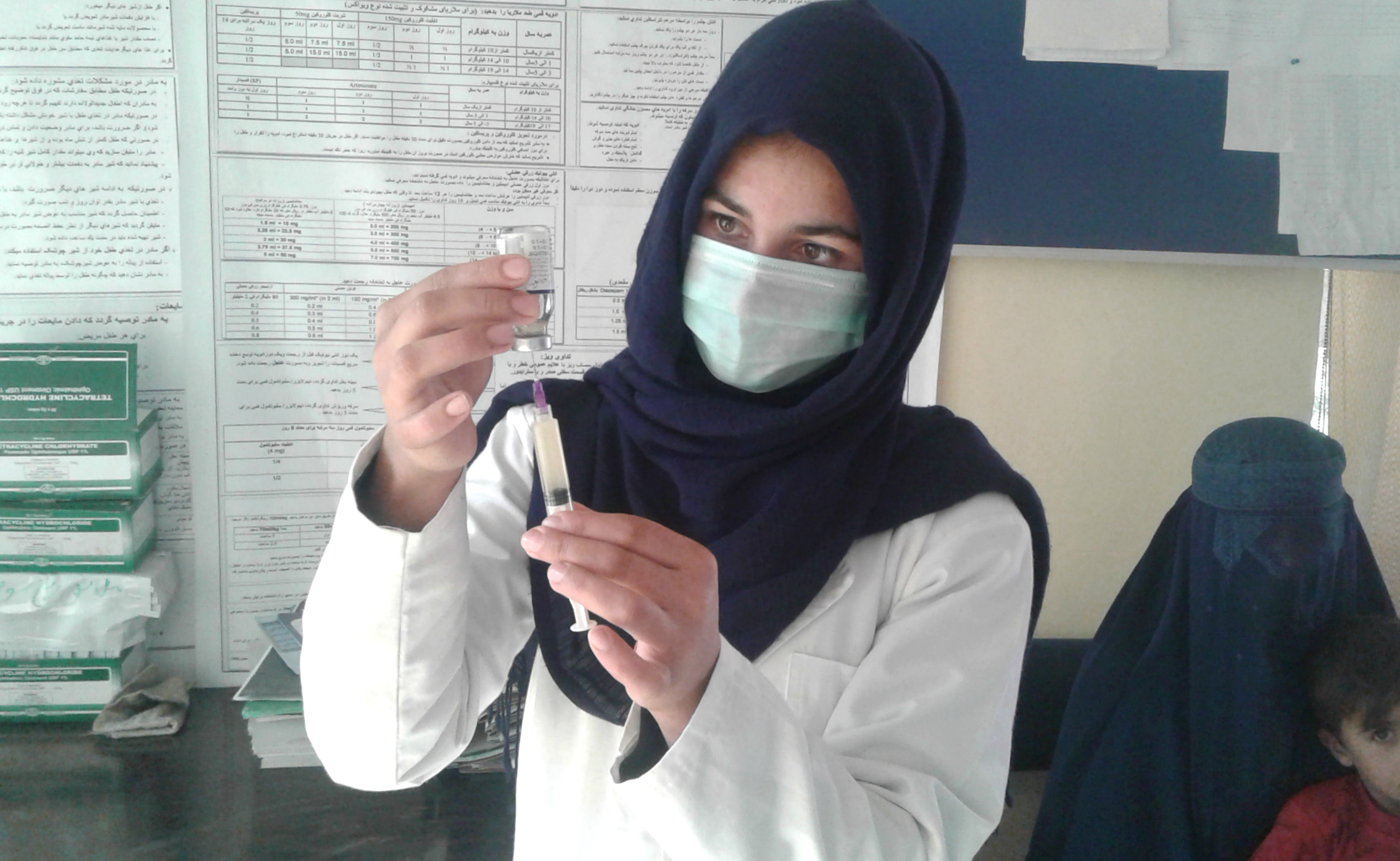
Mission
Razia’s Ray of Hope improves the lives of young women and girls through community-based education in the rural district of Deh’Subz, Afghanistan. Built on the knowledge that education is key to positive, peaceful change for current and future generations, it provides learning and growth in a safe, nurturing environment, empowering girls and women through education and resources so that they may work toward brighter futures – in their own villages and beyond.
Life Challenges of the Women Served
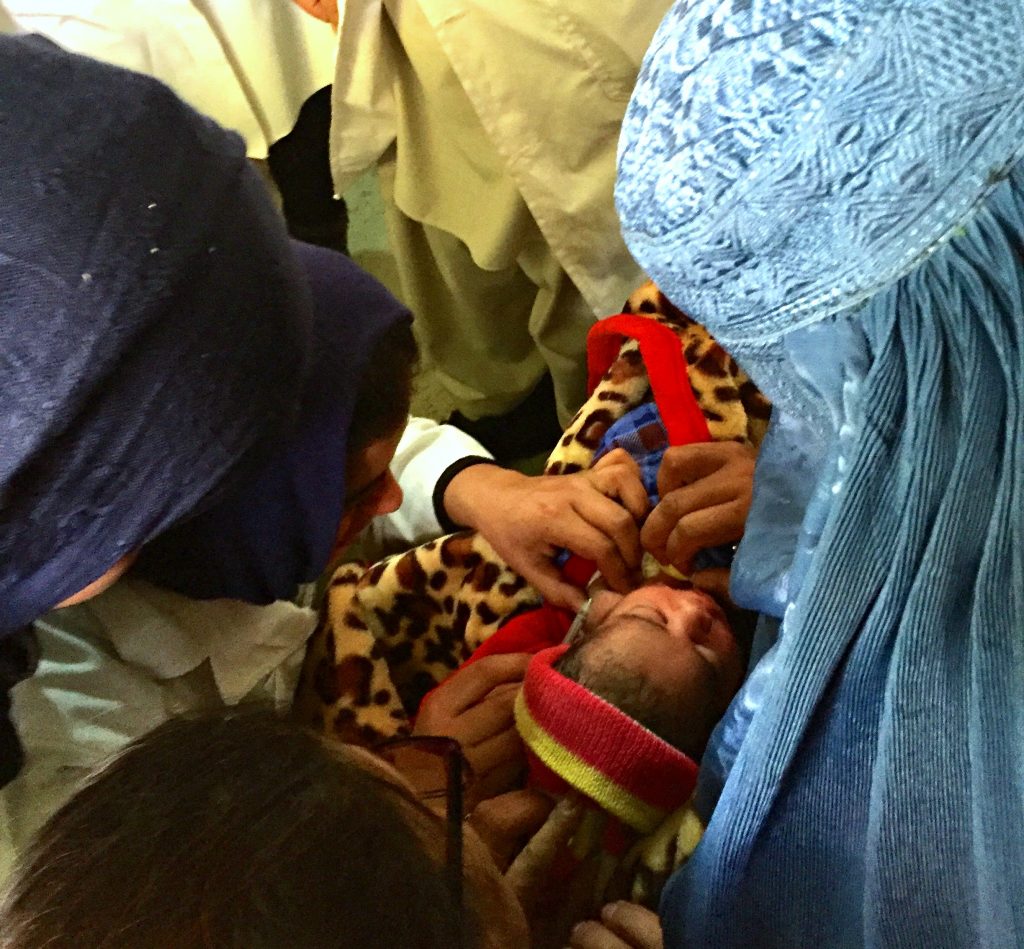 Afghan women are among the worst off in the world, both in comparison to Afghan men and to women in other countries, in accessing health services, education and employment opportunities. For the last four decades, the people of Afghanistan have been subjected to a succession of brutal wars. These conflicts have devastated Afghanistan’s infrastructure and economy. Women and girls have often been the worst victims of these conflicts. Under the Taliban, women were forced to wear an all-encompassing burqa in public and barred from working outside the home. They were also banned from attending schools, riding bicycles, wearing brightly colored clothes, and laughing loudly. Afghan girls and women also face many forms of violence: threats, torture, rape, child and forced marriages, and lack of access to economic, political, and social resources. Violence against women and girls arises due to entrenched gender inequalities deeply rooted in androcentric and fundamentalist religious values. In addition, Islamic fundamentalism continues to influence the Afghan government’s policies on women’s rights.
Afghan women are among the worst off in the world, both in comparison to Afghan men and to women in other countries, in accessing health services, education and employment opportunities. For the last four decades, the people of Afghanistan have been subjected to a succession of brutal wars. These conflicts have devastated Afghanistan’s infrastructure and economy. Women and girls have often been the worst victims of these conflicts. Under the Taliban, women were forced to wear an all-encompassing burqa in public and barred from working outside the home. They were also banned from attending schools, riding bicycles, wearing brightly colored clothes, and laughing loudly. Afghan girls and women also face many forms of violence: threats, torture, rape, child and forced marriages, and lack of access to economic, political, and social resources. Violence against women and girls arises due to entrenched gender inequalities deeply rooted in androcentric and fundamentalist religious values. In addition, Islamic fundamentalism continues to influence the Afghan government’s policies on women’s rights.
Few places in the world are less safe for pregnant women than rural Afghanistan, where the health system is described as in near-total disrepair. Decades of war devastated the country’s healthcare infrastructure and drastically reduced the number of healthcare professionals –particularly female doctors, nurses, and midwives (the latter due to the Taliban’s ban on female education and closure of midwifery schools). Only 48 percent of pregnant Afghan women receive prenatal care. These women lack access to clinics, labor and delivery services, medical equipment, trained healthcare professionals, and control over their healthcare. Other factors include high rates of fertility and child marriage. Teen pregnancies and deliveries often involve complications and, consequently, much greater risk of maternal mortality and morbidity. Thus, adolescent Afghan girls are more than twice as likely to die of pregnancy-related causes than women in their 20s.
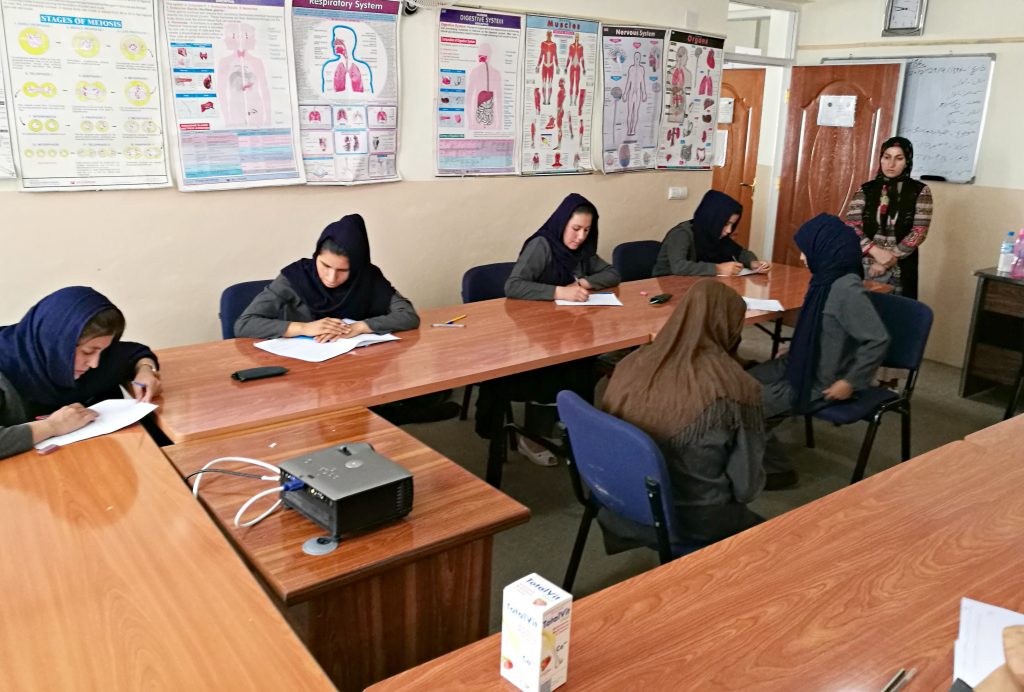 Afghanistan has very high infant and maternal mortality, with an infant mortality rate of 66 per 1,000 and a maternal mortality rate of 396 per 100,000. Sadly, the majority of these deaths are preventable. In fact, the majority of children who die before they turn one month old – nearly 3 million each year – could be saved by better care during the perinatal period. These deaths tend to be among the poorest and most disadvantaged populations.
Afghanistan has very high infant and maternal mortality, with an infant mortality rate of 66 per 1,000 and a maternal mortality rate of 396 per 100,000. Sadly, the majority of these deaths are preventable. In fact, the majority of children who die before they turn one month old – nearly 3 million each year – could be saved by better care during the perinatal period. These deaths tend to be among the poorest and most disadvantaged populations.
There is also a serious lack of education in Afghanistan that results in a 37 percent literary rate for adolescent girls compared to 66 percent of adolescent boys. Among adult women, 19 percent are literate compared to 49 percent of adult men. Only half of Afghan girls are in school; by the time they reach 15, only a third remain. Families often decide it is better for girls to stay home and work instead of study. A lack of schools and teachers, especially female teachers, means many girls simply do not have access to a school. Boys also face a lack of schools, but girls bear a heavier burden because fewer schools accept girls and there are greater restrictions on girls’ freedom of movement. The cost of school supplies and uniforms are enough to keep many children out of school, especially girls, as families that can afford to send only some of their children often give preference to boys. Those who do graduate from high school typically gain employable skills through technical and vocational education and training. College is rarely an option.
The schools that do exist are often lacking in the basics. Thirty percent of Afghan government schools lack safe drinking water, and 60 percent do not have toilets. Girls who have started menstruating are particularly affected by poor toilet facilities. Without private gender-segregated toilets with running water, they face difficulties managing menstrual hygiene at school and are likely to stay home during menstruation, leading to gaps in attendance that undermine academic achievement and an increase the risk that they will drop out of school entirely.
The Project
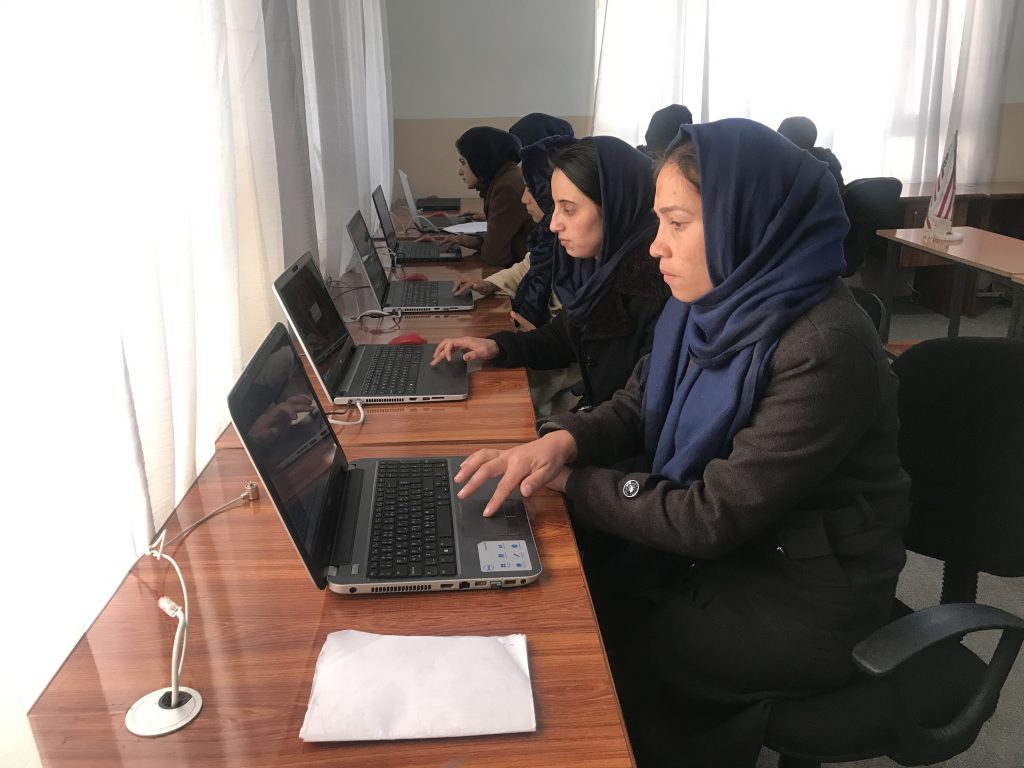 This project will train young, talented students to become midwives, which will allow them to be on the frontlines of providing to provide essential healthcare services and education in their communities.
This project will train young, talented students to become midwives, which will allow them to be on the frontlines of providing to provide essential healthcare services and education in their communities.
The Razia Jan Institute (RJI) provides a vehicle by which young women in rural Afghanistan are provided the education, resources and tools to transform their lives, empowering them economically and socially. Through the education provided by the Razia Jan Institute, these young women will become healthcare providers, directly influencing the health and welfare of every person in the community through the provision of services to women and children. They will contribute to changing the narrative of women’s role in Afghan society as they become active and respected participants in their communities, leading to positive shifts in social expectations and greater gender equality.
The primary goal of the Razia Jan Institute is to increase Afghan women’s access to healthcare, particularly maternal, prenatal, and neonatal services, and to support women’s education and livelihood development. This program improves maternal and infant health outcomes, increases Afghan women’s workforce options and self-sufficiency, creates a safe and supportive network for Afghan women to continue to seek education, and encourages the education and development of Deh’Subz’s women for the general well-being of the broader community.
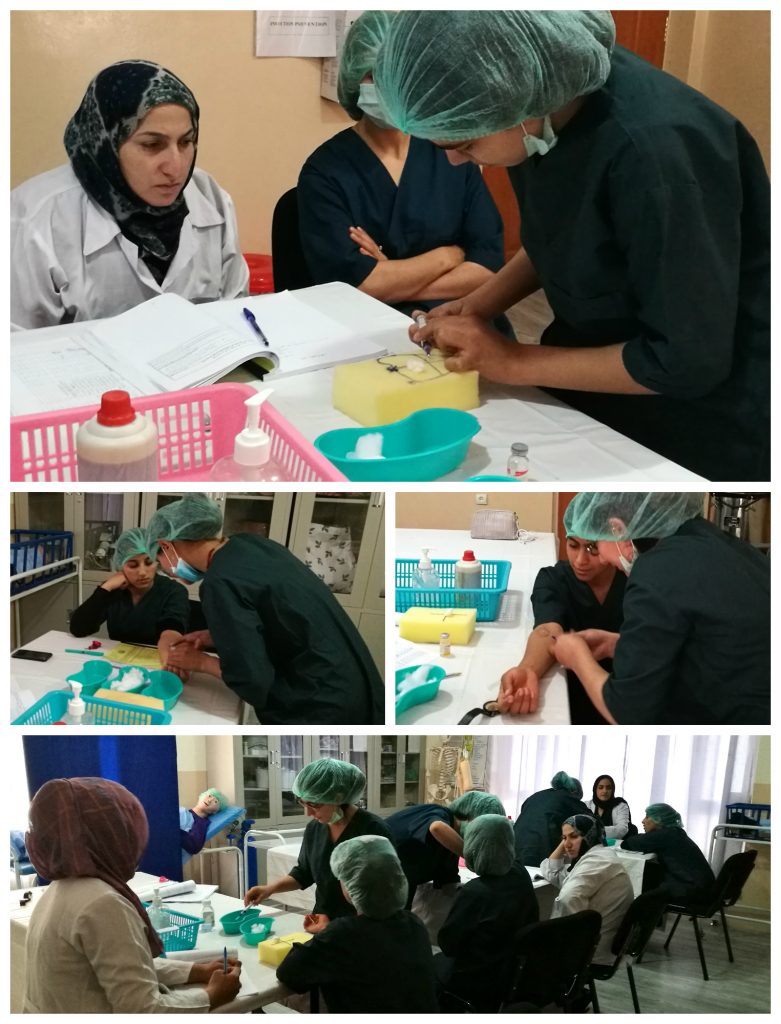 The Razia Jan Institute conducts a two-year midwifery program for 20 participants. DFW’s grant covers one year of salaries for a doctor, nurses and midwife trainers. The RJI facility is outfitted with midwifery equipment and medical supplies, a fully functional computer lab, and highly qualified staff. In the first year, students receive Ministry of Public Health-certified midwifery training and healthcare education in the RJI classroom. During the second semester the students begin to rotate through local clinics and hospitals, dividing their time equally between classroom learning and hands-on midwifery training with hospital-based staff and doctors, providing direct support of in-patient mothers, pregnant women, and infants. The second year is a continuation of classroom and hands-on training, culminating in a six-month capstone project in the foremost women’s hospital in Kabul, Rabia Balkhi Women’s Hospital. During both years, the students also receive instruction in English, computer training, and financial literacy. To complete program requirements for graduation and certification, midwifery students must assist in the successful delivery of at least 60 live births.
The Razia Jan Institute conducts a two-year midwifery program for 20 participants. DFW’s grant covers one year of salaries for a doctor, nurses and midwife trainers. The RJI facility is outfitted with midwifery equipment and medical supplies, a fully functional computer lab, and highly qualified staff. In the first year, students receive Ministry of Public Health-certified midwifery training and healthcare education in the RJI classroom. During the second semester the students begin to rotate through local clinics and hospitals, dividing their time equally between classroom learning and hands-on midwifery training with hospital-based staff and doctors, providing direct support of in-patient mothers, pregnant women, and infants. The second year is a continuation of classroom and hands-on training, culminating in a six-month capstone project in the foremost women’s hospital in Kabul, Rabia Balkhi Women’s Hospital. During both years, the students also receive instruction in English, computer training, and financial literacy. To complete program requirements for graduation and certification, midwifery students must assist in the successful delivery of at least 60 live births.
Razia’s Ray of Hope Foundation encourages all 12th grade graduates from Zabuli Education Center, the organization’s flagship program, to apply for admission to Razia Jan Institute’s midwifery program. The formal admission process includes an entrance examination and formal permission granted from parents and family for students’ admission and attendance. In addition to Zabuli Education Center graduates, the Razia Jan Institute’s admission program is open to all women based in the Deh’Subz district who pass the entrance examination and qualify for admission. The program is restricted to residents of the Deh’Subz area (or women who can travel to Deh’Subz) due to the current security situation in Afghanistan and the inability of the program school bus to travel extensively across Kabul in transporting students. Since the Razia Jan Institute midwifery program is free of cost for students, no women from the community are turned away for financial reasons.
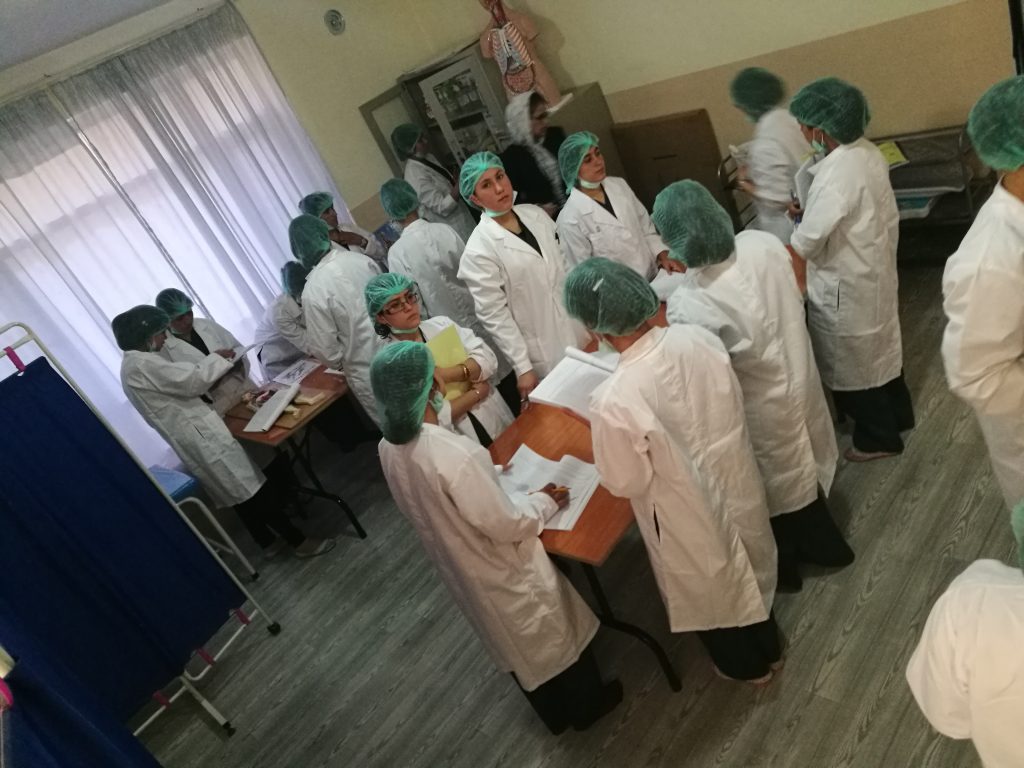 RJI will matriculate 20 – 25 young women every other year beginning with the first class, which started in 2017. By January 2021, 40 – 45 newly educated midwives will be trained and providing life-saving services to their community, while also improving the social, health, and economic outcomes of themselves, their families and their community.
RJI will matriculate 20 – 25 young women every other year beginning with the first class, which started in 2017. By January 2021, 40 – 45 newly educated midwives will be trained and providing life-saving services to their community, while also improving the social, health, and economic outcomes of themselves, their families and their community.
The RJI program provides numerous benefits:
- The 20 families with daughters at the Razia Jan Institute, each with an average of six members per family, will result in hundreds of lives being directly and positively impacted in Deh’Subz or elsewhere in Afghanistan. In essence, every person in the Deh’Subz district benefits from the work of Razia’s Ray of Hope Foundation.
- Improved health and wellness outcomes for women and girls in the Deh’Subz district;
- The education, skills, and experience the midwifery students gain will dramatically increase their self- sufficiency;
- Graduates have greater confidence in managing finances, greater fluency in English, and increased computer literacy;
- Visible increase in respect and greater equality for women across social, economic, and political platforms;
- Greater perceived value of women’s education;
- Improved quality of life for educated girls and young women;
- Increased livelihoods for the families of Deh’Subz and improved health indicators and outcomes for more mothers and children in Afghanistan.
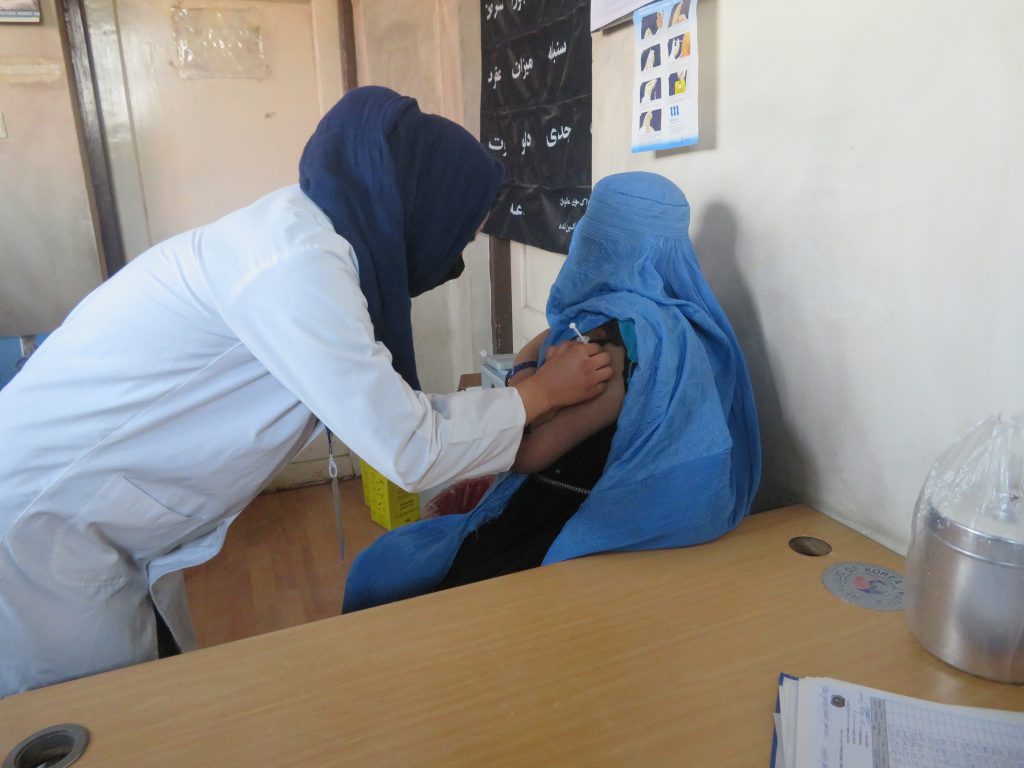 These young women will be on the frontlines in their community, providing essential healthcare services and information to women and children, having a direct and profound impact on health and wellness indicators and outcomes for these vulnerable populations. Through their work as midwives and healthcare providers in their communities, the graduates of the Razia Jan Institute will be well positioned to educate and influence their patients, providing support and information that will allow more women and children to benefit from increased access to quality healthcare and better decision-making regarding nutrition, food, and health/wellness. Midwives are esteemed community workers. These successful professional women will become vital role models of female empowerment in their communities, challenging social norms and providing alternative narratives for women’s lives.
These young women will be on the frontlines in their community, providing essential healthcare services and information to women and children, having a direct and profound impact on health and wellness indicators and outcomes for these vulnerable populations. Through their work as midwives and healthcare providers in their communities, the graduates of the Razia Jan Institute will be well positioned to educate and influence their patients, providing support and information that will allow more women and children to benefit from increased access to quality healthcare and better decision-making regarding nutrition, food, and health/wellness. Midwives are esteemed community workers. These successful professional women will become vital role models of female empowerment in their communities, challenging social norms and providing alternative narratives for women’s lives.
Afforded education and practical skills, Razia Jan Institute students embark on a path towards opportunity and economic freedom despite the challenging environment. Educated and empowered women are essential to enhance peaceful transitions in conflict-torn countries and play a strong role in ending extreme poverty and promoting a more resilient and democratic society.
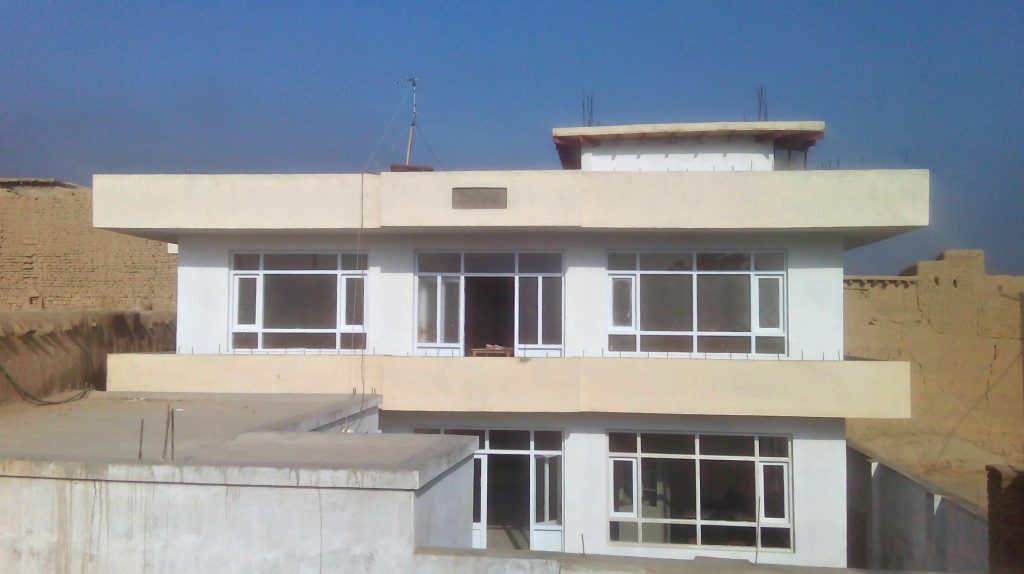 The Razia Jan Institute partners with the Afghan Ministry of Public Health in order to ensure the midwifery coursework and instruction are regulated, and in accordance with midwifery certification requirements in Afghanistan. To facilitate hands-on learning in a clinical setting, Razia Jan Institute has partnered with two local health clinics in Deh’Subz and Mir Bacha Kot Hospital in Kabul province. An additional partnership will be established with Rabia Balkhi Women’s Hospital, which is the leading maternal health hospital in Kabul.
The Razia Jan Institute partners with the Afghan Ministry of Public Health in order to ensure the midwifery coursework and instruction are regulated, and in accordance with midwifery certification requirements in Afghanistan. To facilitate hands-on learning in a clinical setting, Razia Jan Institute has partnered with two local health clinics in Deh’Subz and Mir Bacha Kot Hospital in Kabul province. An additional partnership will be established with Rabia Balkhi Women’s Hospital, which is the leading maternal health hospital in Kabul.
In the long-term, the foundation anticipates RJI will become a leading educator of midwives in Afghanistan, a sought-after educational program that could potentially be replicated at other locations throughout Afghanistan.
Impact:
Direct – 20, Indirect – 2,100 women and children receiving care
Sustainable Development Goals
![]()
![]()
![]()
![]()
Questions for Discussion
- How might the RJI program lead to interest in other educational opportunities?
- Why do you think the RJI graduates are seen as leaders in their communities?
- What might be the long-term effect on gender equality?
How the Grant Will be Used
DFW’s grant of $41,040 for one year will be used for the following:

Why We Love This Project/Organization
We love this project’s emphasis on providing young, talented, and needy students with the opportunity to continue their education, develop skills, and become role models in their communities. This project will have a direct and profound impact on maternal and infant health outcomes in Afghanistan.
Evidence of Success
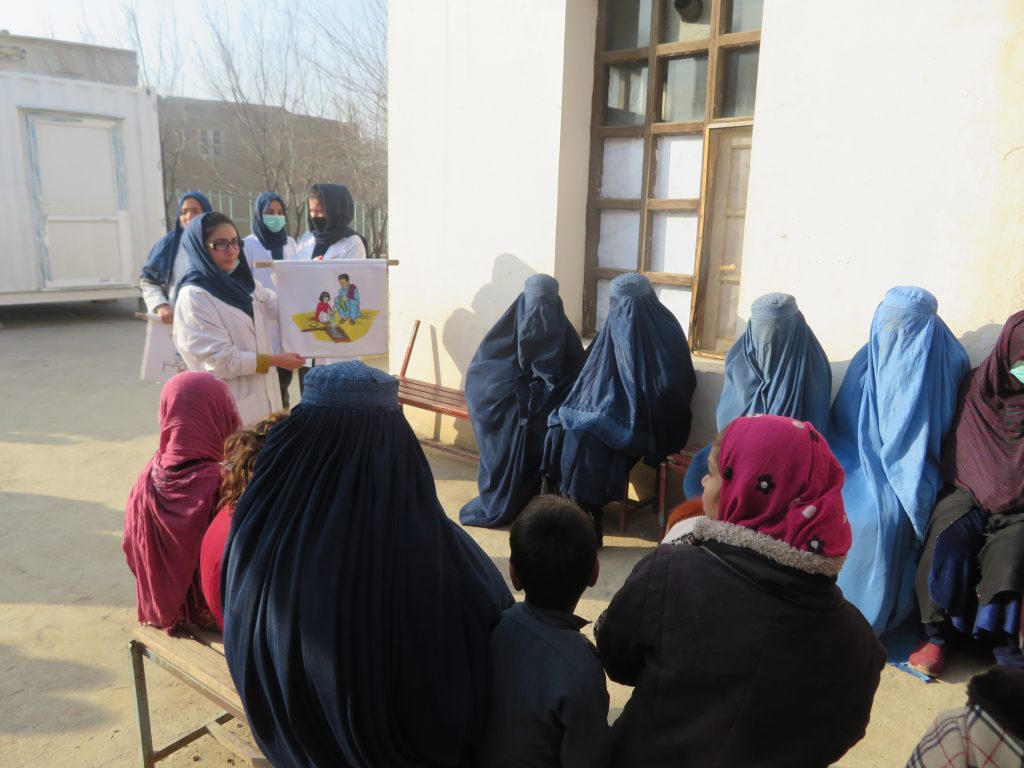 The philosophy of education and school building employed by Razia’s Ray of Hope Foundation has proved remarkably effective. The success and impact of the Zabuli Education Center can be seen in the following statistics using the past ten years of data: 93 percent student attendance rate, 85 percent student retention rate, and 99 percent student passing rate.
The philosophy of education and school building employed by Razia’s Ray of Hope Foundation has proved remarkably effective. The success and impact of the Zabuli Education Center can be seen in the following statistics using the past ten years of data: 93 percent student attendance rate, 85 percent student retention rate, and 99 percent student passing rate.
These successful results can also be seen in graduation rates and the number of graduates participating in post-secondary education. In 2015, the Zabuli Education Center celebrated its first graduation of 7 young women, and subsequently 15 young women graduating in 2016, 18 young women graduated in 2017, with a projected class of 27 graduates in 2018. Of the first two graduating classes, 21 young women are now enrolled in a post- secondary academic program. Four are enrolled in the American University of Afghanistan in Kabul, one has received a full scholarship to attend the American University of Istanbul, and 16 attend the Razia Jan Institute. Of the 2017 graduating class, six young women will attend the Razia Jan Institute in March 2019 and eight will attend Kabul University. Remarkably, the class of 2017 includes students who are married – and even a married student who is pregnant with a baby girl. It is difficult to overstate how unimaginable these scenarios would have been just a few years ago.
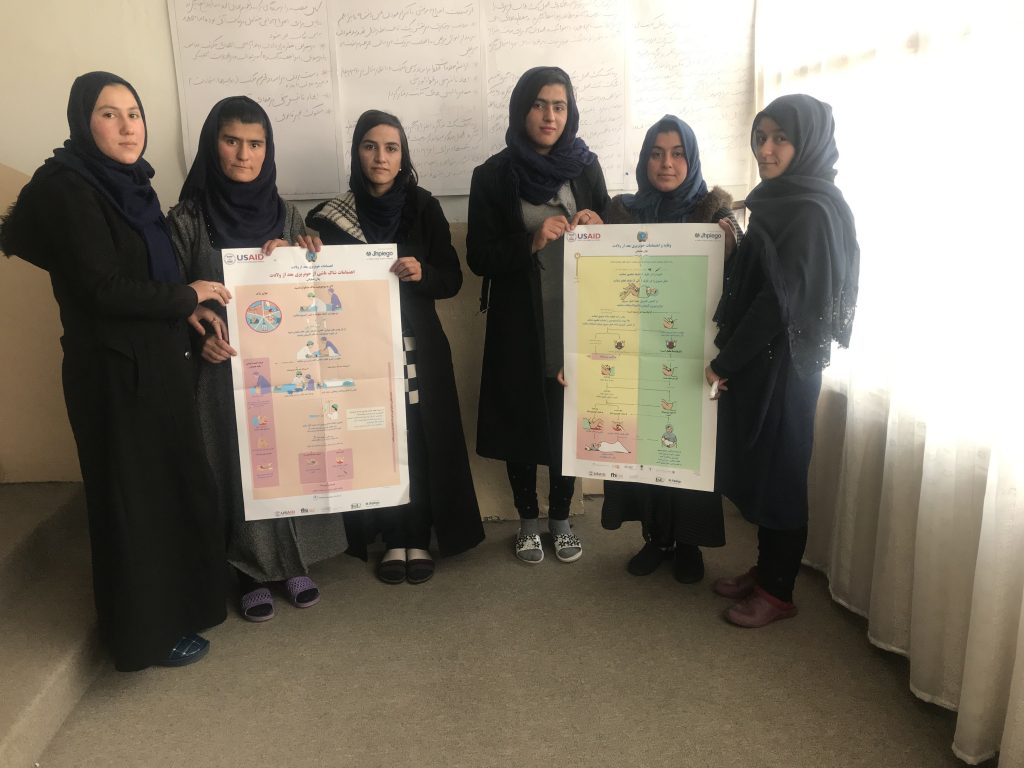 In its multi-millennial history, the Deh’Subz district had never educated girls. It is a conservative, traditional community that did not initially embrace the idea of providing educational opportunities to its daughters. However, the past ten years has seen a dramatic shift in the community’s acceptance and demand for educating girls. Both schools have become integral to the community, as families begin to recognize the value of educating their daughters. In December 2017, 300 families attempted to register their daughters for 50 kindergarten spots.
In its multi-millennial history, the Deh’Subz district had never educated girls. It is a conservative, traditional community that did not initially embrace the idea of providing educational opportunities to its daughters. However, the past ten years has seen a dramatic shift in the community’s acceptance and demand for educating girls. Both schools have become integral to the community, as families begin to recognize the value of educating their daughters. In December 2017, 300 families attempted to register their daughters for 50 kindergarten spots.
Razia’s Ray of Hope Foundation also considers more qualitative indicators such as community acceptance and support, and most importantly, the place and stance of women in society—which have begun to shift in a positive direction. Students are developing the confidence to advocate for themselves and to make a difference in their communities. These are the skills they will need to bring to bear in affecting meaningful and lasting change.
These positive changes in societal expectations can be seen in the changing dynamics of the Zabuli Education Center’s graduation ceremonies. At the school’s first graduation ceremony, held in December 2015, graduates each spoke before the audience, which included prominent men in the community. Such a display of public speaking is generally not permitted by women, especially not younger women, and reflected the changing perceptions of women in the community. 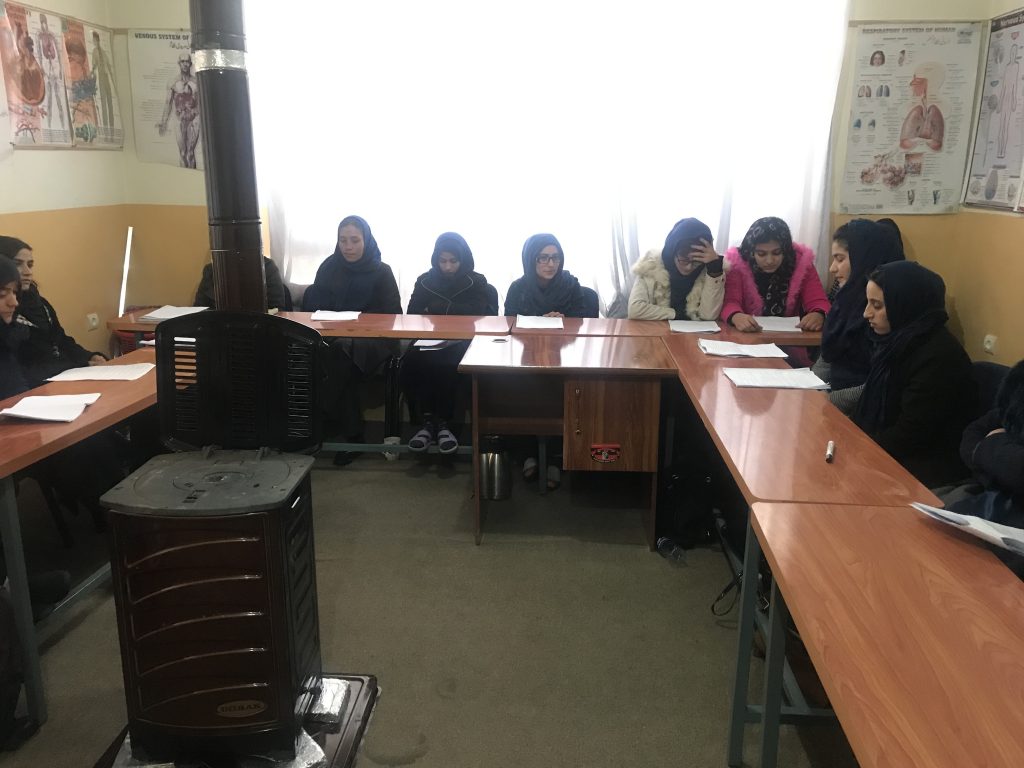 With each successive graduation, the school has seen an increased level of participation by community elders in the graduation ceremony, culminating in their insistence in handing out the diplomas to the graduates in 2017. There has also been a steady increase in women (mothers, aunts, and sisters) attending the graduation ceremony. In 2015, these women segregated themselves to one corner of the room wearing burqas. In 2017, their numbers doubled, they sat intermixed with the men and boys of the community – and many burqas were replaced with respectable head scarves.
With each successive graduation, the school has seen an increased level of participation by community elders in the graduation ceremony, culminating in their insistence in handing out the diplomas to the graduates in 2017. There has also been a steady increase in women (mothers, aunts, and sisters) attending the graduation ceremony. In 2015, these women segregated themselves to one corner of the room wearing burqas. In 2017, their numbers doubled, they sat intermixed with the men and boys of the community – and many burqas were replaced with respectable head scarves.
In a poignant example of the foundation’s success in empowering girls to challenge oppression, one student struggled against an arranged marriage to a much older man. For six months, she endured abuse from family members in their efforts to coerce her into complying. The support of the teachers, administration, and the young woman’s classmates seemed to help this student endure. They rallied her spirits, even on days when laughter hurt because her ribs had been broken. After six months of steadfast refusal, her family finally relented, allowing her to return to school and to make her own choices about marriage. This tragic yet encouraging tale demonstrates the immense challenges women in Afghanistan face, and the only way through them – the education and empowerment of young women and girls. This was no small victory, one that reverberated through the school and community, providing students with a glimpse of an alternative outcome to what may have seemed like a forgone conclusion.
Razia’s Ray of Hope Foundation is the recipient of numerous awards and recognition, including:
- Service Above Self Award, Rotary International, 2016
- Global Woman of Action Award, Rotary International, 2015
- Agent of Change Award, Rotary Club of Concord, 2015
- Social Entrepreneur Award, Babson College, 2014
- American Muslim Women’s Empowerment Council Award, 2013
- CNN Hero (Top 10), 2012
- Germaine Lawrence Woman of Excellence Award, 2007
- Certificate of Appreciation, Army Corps of Engineers, 2007
- World Peace Award, Rotary International, 2005
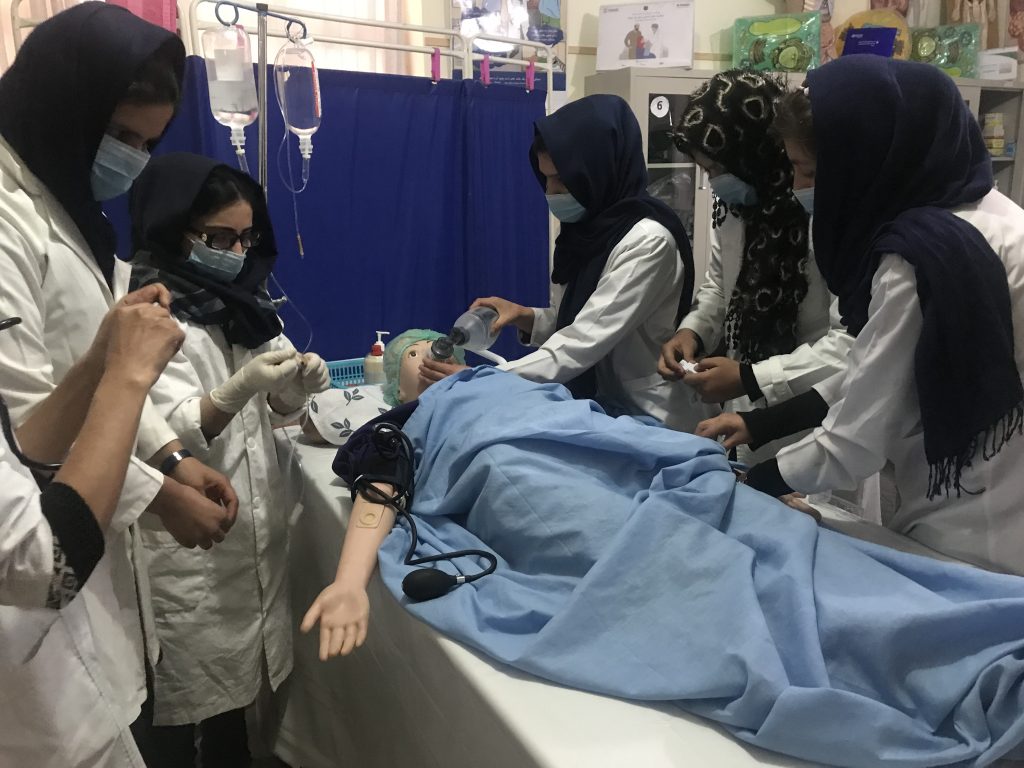 Razia’s humanitarian efforts were honored in First Lady Laura Bush’s 2016 book We Are Afghan Women and the Emmy nominated, award-winning documentary What Tomorrow Brings.
Razia’s humanitarian efforts were honored in First Lady Laura Bush’s 2016 book We Are Afghan Women and the Emmy nominated, award-winning documentary What Tomorrow Brings.
In early 2018, Razia’s Ray of Hope Foundation, the Zabuli Education Center and the American University of Afghanistan (AUAF) entered into a new partnership, establishing a relationship between the two schools to facilitate access to higher education for Zabuli Education Center graduates. AUAF will provide a fully funded scholarship to a high-achieving student each year (and in some instances two students). Further, Razia’s Ray of Hope Foundation and the Zabuli Education Center are beginning to have an impact in the larger educational community of Afghanistan. Currently, the foundation and the school are partnering with the University of Nebraska Omaha (UNO) to implement a project with the overarching goal of promoting peace in Afghanistan through education.
Voices of the Girls
“I was attending a delivery at the local clinic and the midwife on duty expressed concern and confusion over a complication in the delivery. I asked to see the patient and realized through my training that she was carrying twins. We were then able to safely deliver both babies. I was so proud I was able to identify and solve a problem that a professional midwife couldn’t. It has given me the confidence I need as I graduate. Thank you, Razia Jan!”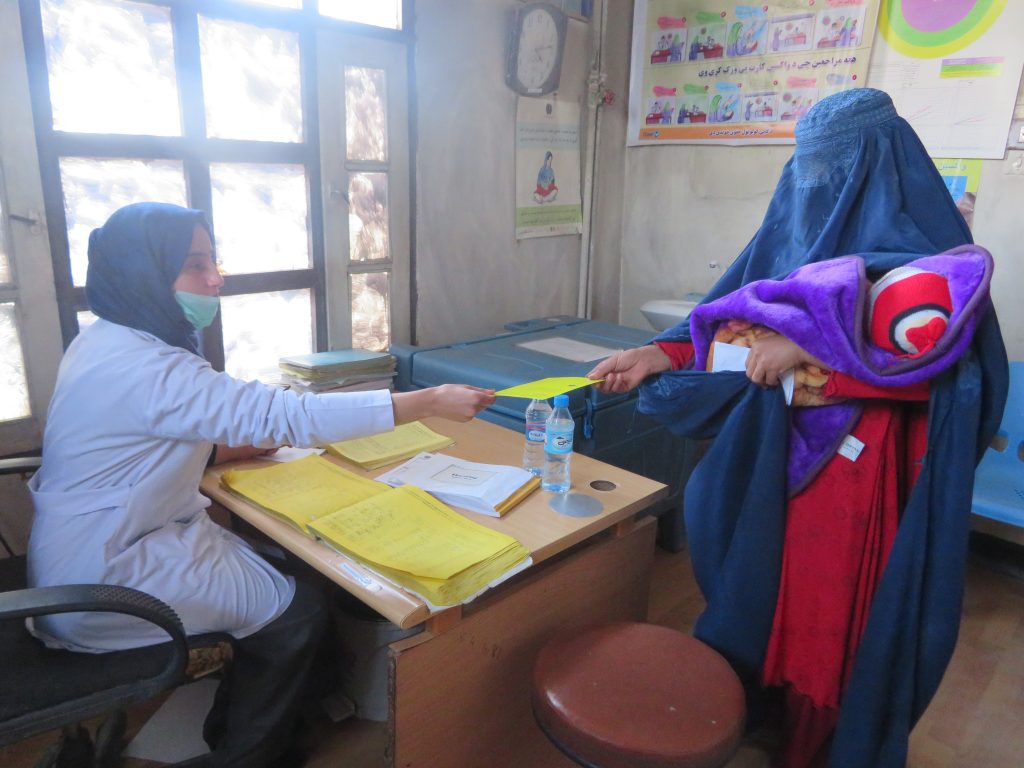
- Aziza
“My uncle called late one night and asked me to come to his house. His wife was having pain as she was nine months pregnant. He asked me if I could help. When I arrived at the house, I asked for some equipment and started to deliver her baby. When the child was born, the family was amazed. The interesting thing is that my uncle had been very against my education, telling my father he was a fool for letting me go to school. Now he is proud of me and he gave me a cellphone with internet access. Thank you to the Razia Jan Institute!”
- Haseena
“A few months ago, I delivered my brother’s wife’s baby in a house with minimal equipment. Fortunately, the delivery was successful, and that would not have been possible if I was not a student at Razia Jan Institute. I am very happy that I can deliver a mother at home or in the clinic. Thank you Razia Jan!”
- Alia
About the Organization
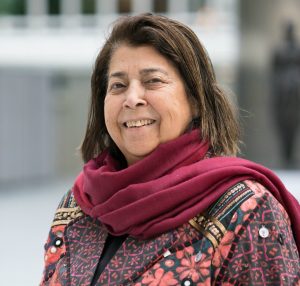 Razia Jan, native Afghan and award-winning humanitarian, is the founder of Razia’s Ray of Hope Foundation, founded in 2007 that improves the lives of young women and girls through community-based education in the rural district of Deh’Subz, Afghanistan.
Razia Jan, native Afghan and award-winning humanitarian, is the founder of Razia’s Ray of Hope Foundation, founded in 2007 that improves the lives of young women and girls through community-based education in the rural district of Deh’Subz, Afghanistan.
In March 2008, Razia’s Ray of Hope Foundation opened its flagship program, the Zabuli Education Center, an all-girl K-12 school, with 100 students. Today the school is thriving in its tenth year of operation, providing free, exceptional education and school supplies, in addition to uniforms, shoes, warm coats, and healthy meals, to approximately 625 disadvantaged girls in a region with one of the lowest literacy rates in the world. Zabuli Education Center students come from impoverished, uneducated households in a society that systemically stifles women’s achievement.
In March 2017, Razia’s Ray of Hope Foundation opened the Razia Jan Institute, the first women’s post-secondary vocational school in this region of Afghanistan, adjacent to the Zabuli Education Center. The Razia Jan Institute is a tuition-free, two-year midwifery training program and educational facility emphasizing the importance of maternal and infant health while supporting health-sector employment for Afghan women, and includes classes in English, personal finance, and computer literacy. Building on the success of the Zabuli Education Center, the Razia Jan Institute offers post-secondary education opportunities to graduates of the Zabuli Education Center and other community members, providing them with a clear path to empowered employment as midwives while bringing medical services to a desperately underserved area.
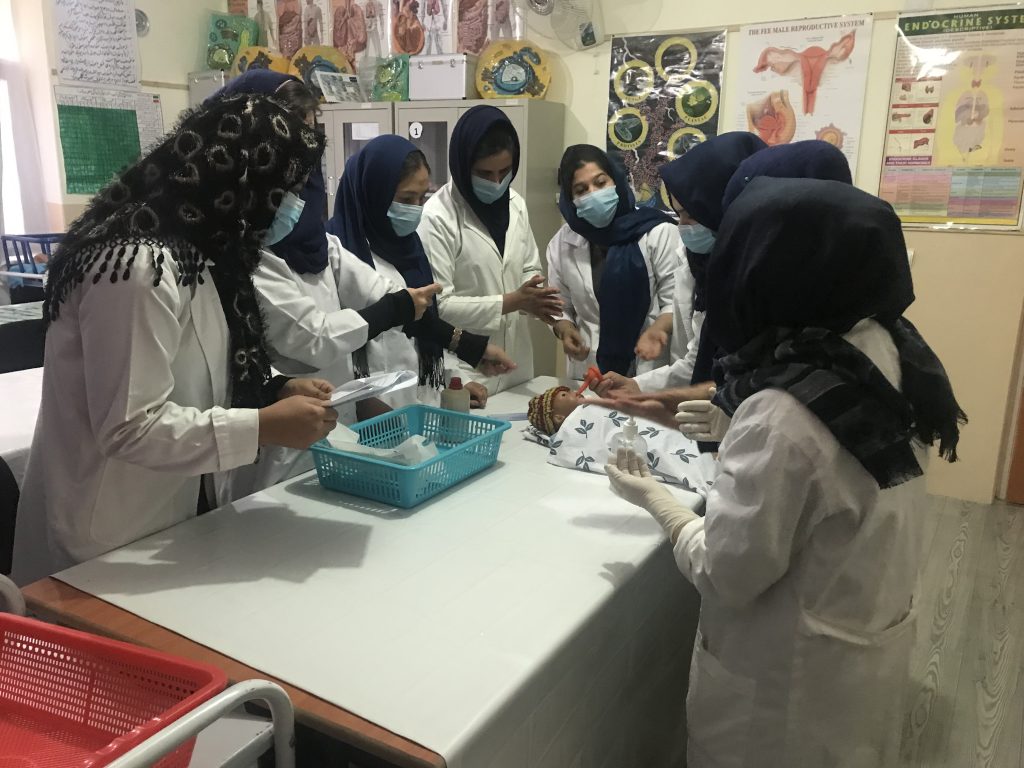 Razia’s Ray of Hope Foundation provides exemplary Ministry of Education-certified K-12 education to disadvantaged and impoverished girls in Deh’Subz, Afghanistan. In addition to providing students with free, superlative education, the Zabuli Education Center also provides school supplies, uniforms, shoes, warm coats, and healthy meals. The Foundation also provides a Ministry of Public Health-certified post-secondary vocational education in midwifery to graduates of the Zabuli Education Center as well as other women in the community who are able to pass an admissions screening.
Razia’s Ray of Hope Foundation provides exemplary Ministry of Education-certified K-12 education to disadvantaged and impoverished girls in Deh’Subz, Afghanistan. In addition to providing students with free, superlative education, the Zabuli Education Center also provides school supplies, uniforms, shoes, warm coats, and healthy meals. The Foundation also provides a Ministry of Public Health-certified post-secondary vocational education in midwifery to graduates of the Zabuli Education Center as well as other women in the community who are able to pass an admissions screening.
Where They Work
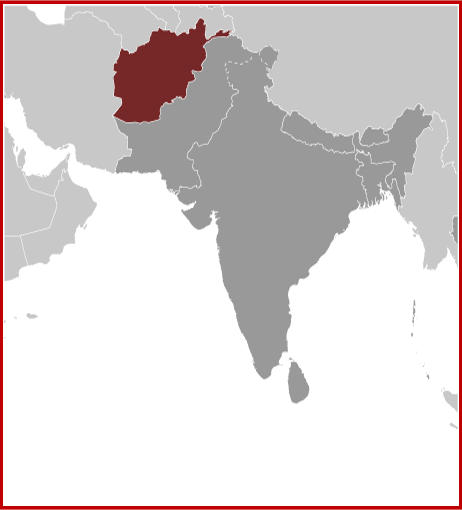
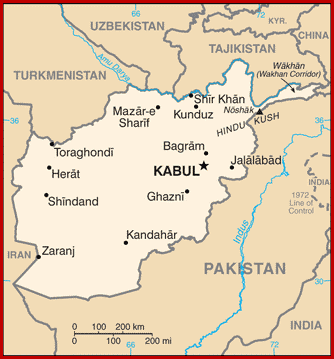
Razia’s Ray of Hope Foundation’s service area is Deh’Subz, Afghanistan. The Deh’Subz district is 30 miles north of central Kabul. It consists of 46 villages and 100,000 residents, including many nomadic families. Agriculture is the most important source of income in Deh’Subz, however, the stability of farming has been severely affected by sporadic drought. Access to water is a major problem in the district due to post-war-related destruction of water pipes and agricultural irrigation systems. Deh’Subz was heavily impacted by the Afghan-Soviet War (1979–1989), which resulted in the devastation of many villages, including 80 percent of residential housing. More than 73 percent of families are impoverished, living on less than $7 per week.
Afghanistan is a rugged landlocked country about the size of Texas that borders China, Pakistan, Tajikistan, Turkmenistan, and Uzbekistan. Most Afghans live in the foothills of the Hindu Kush range in the east, while some are scattered in the interior valleys. The south is sparsely populated. The population is nearly entirely Muslim, predominantly Sunni (up to 90 percent) versus Shia. The population of 37 million is comprised of numerous ethnic groups and is young, with a median age of 18.8 compared to the US average of 38. Only 26 percent live in urban areas, compared to over 80 percent in the US. Over half are below the poverty line and just 38 percent are literate. Women have an average of five children, although the incidence of infant mortality is very high. The average life expectancy is 50 for men, 53 for women.
Life in Afghanistan is not easy: living standards are among the lowest in the world and there are shortages of housing, clean water, electricity, medical care, and jobs. Air and water pollution are evident in the urban areas, as is overgrazing and deforestation. Corruption is rampant, there is a lack of infrastructure, and the government does not maintain the rule of law evenly to all parts of the country.
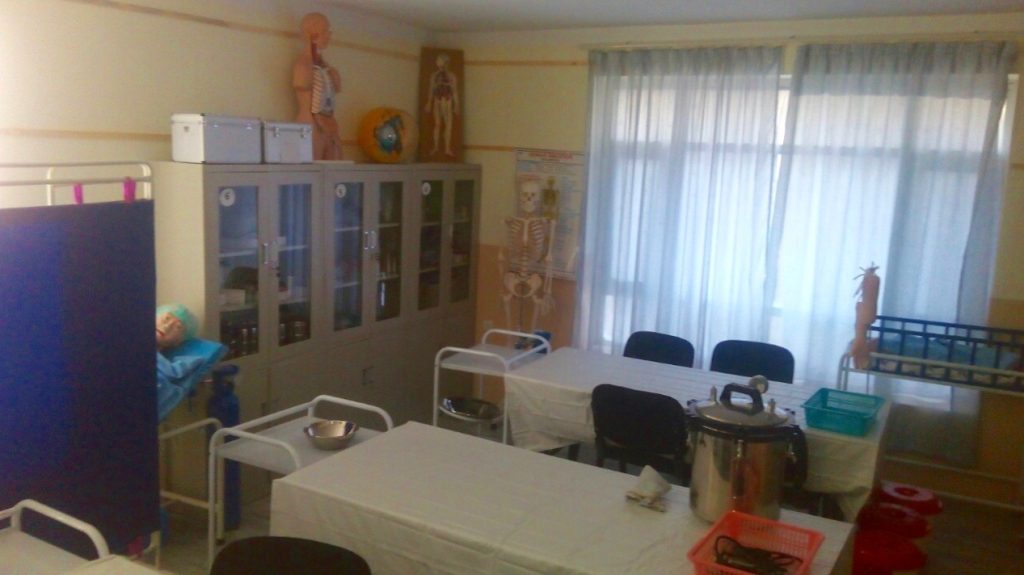 Although there has been progress in building a stable government, the Taliban remains a serious ongoing challenge. This is because the Taliban still considers itself the true government of Afghanistan, and its ruthless means of making this point are evident even after its last two leaders were killed. Today, the Taliban claims it will only pursue a peace deal with Kabul after foreign military forces have left the country. Despite this inner turmoil, Afghanistan continues to recover from decades of war. Prior to 2014, its economy actually saw a decade of growth, mostly due to international assistance. Since the withdrawal of nearly 100,000 foreign troops in 2014, however, economic growth has slowed. The international community continues to show commitment to helping Afghanistan by pledging billions of dollars of aid. But for real change to occur, the government of Afghanistan must overcome many obstacles, including low revenue collection, scant job creation, and significant corruption, among other problems.
Although there has been progress in building a stable government, the Taliban remains a serious ongoing challenge. This is because the Taliban still considers itself the true government of Afghanistan, and its ruthless means of making this point are evident even after its last two leaders were killed. Today, the Taliban claims it will only pursue a peace deal with Kabul after foreign military forces have left the country. Despite this inner turmoil, Afghanistan continues to recover from decades of war. Prior to 2014, its economy actually saw a decade of growth, mostly due to international assistance. Since the withdrawal of nearly 100,000 foreign troops in 2014, however, economic growth has slowed. The international community continues to show commitment to helping Afghanistan by pledging billions of dollars of aid. But for real change to occur, the government of Afghanistan must overcome many obstacles, including low revenue collection, scant job creation, and significant corruption, among other problems.
Today, 44 percent of the workforce is in agriculture and one out of four is unemployed. Afghanistan produces wheat, fruits, nuts, and wool, and it is the world’s largest producer of opium. Poppy cultivation has increased significantly in the recent past. The Taliban and other anti-government groups profit greatly from the opium trade, while corruption and instability impede anti-drug efforts. Not surprisingly, there is a growing opiate addiction problem inside Afghanistan as well. Recently, a national drug use survey showed that approximately 11 percent of the population tested positive for one or more illegal drugs.
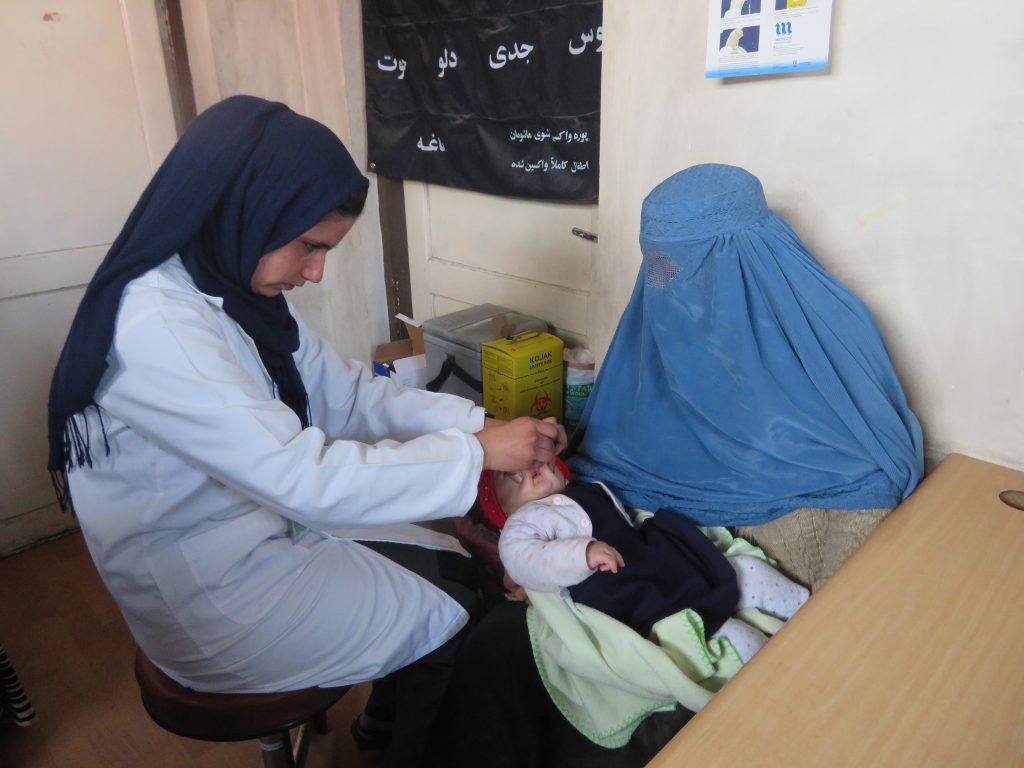 A Closer Look at healthcare in Afghanistan
A Closer Look at healthcare in Afghanistan
As a post-conflict nation, Afghanistan has struggled to rebuild its healthcare system. In addition to ongoing violence, the political system is unstable, the economy is poor, security issues linger, and baseline health indices are extremely challenging. Afghanistan ranked 168 out of 189 in the 2018 United Nations Human Development Index. A third of Afghan citizens have tuberculosis, and there are epidemics of cholera, malaria, measles, and malnutrition – as well as physical and psychological trauma and serious human rights abuses.
Afghanistan’s healthcare system has been in disarray for years, and the rebuilding process has involved the Afghan government, numerous nongovernmental organizations (NGOs), and the US government. Progress has been slow. Lack of infrastructure, the result of decades of wars, has resulted in poor roads and vehicles. Over 80 percent of citizens who do receive primary care do so through NGOs, and there is a shortage of doctors and nurses. Emergency services have historically been unavailable because emergency medicine was not seen as a specialty in Afghanistan. That is slowly changing, but problems persist, including coordination challenges among government and healthcare providers, a lack of access to healthcare facilities, poor hospital conditions, and a serious lack of trained healthcare workers – especially women.
Source Materials
http://hdr.undp.org/en/2018-update
https://borgenproject.org/common-diseases-in-afghanistan/
https://www.ncbi.nlm.nih.gov/pmc/articles/PMC2700223/#CR7
http://www.worldometers.info/world-population/afghanistan-population/
https://www.cia.gov/library/publications/the-world-factbook/geos/af.html
